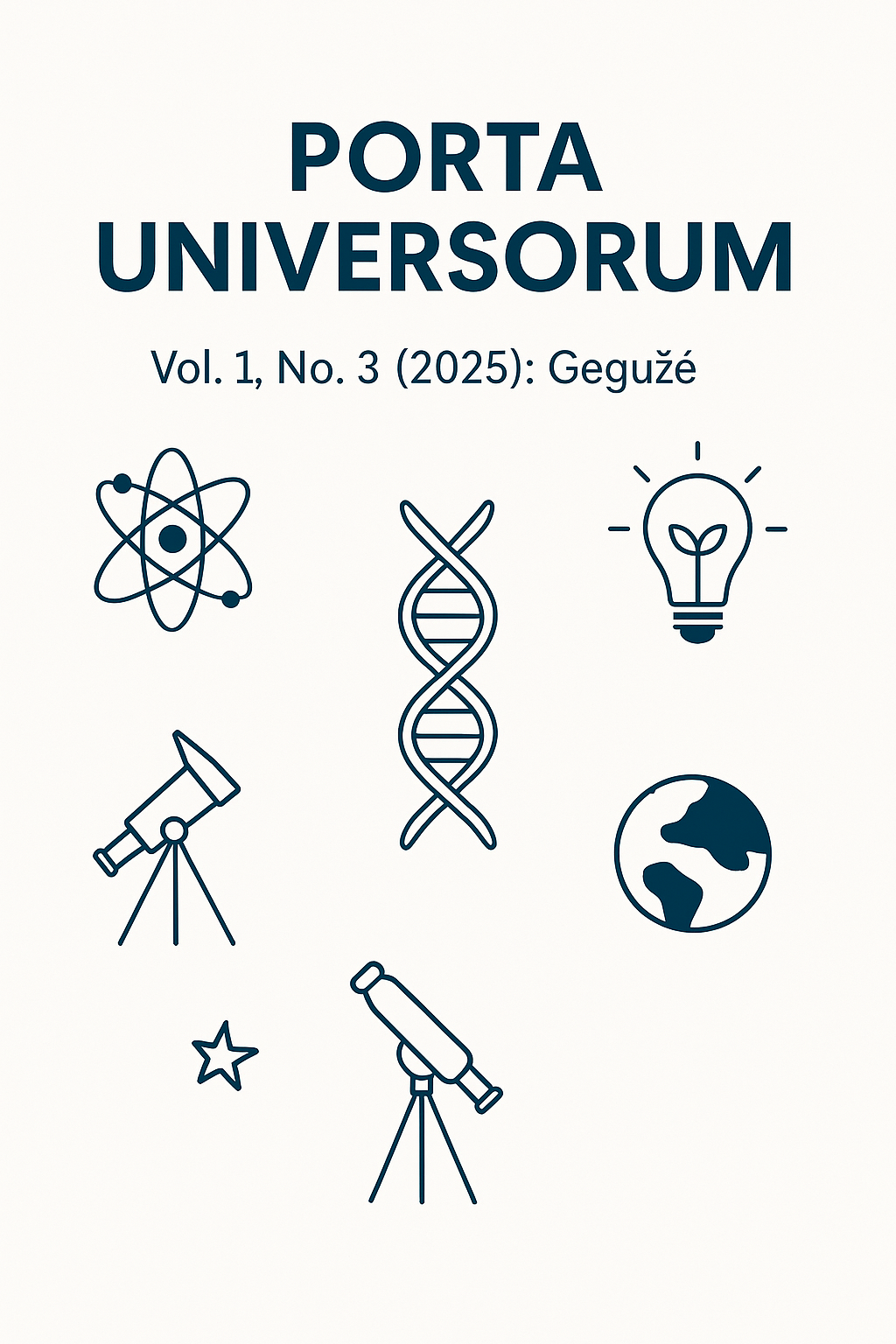Traditional vs. Non-Traditional Teaching in Secondary Education: A Comparative Analysis
##semicolon##
https://doi.org/10.69760/portuni.010309##semicolon##
traditional pedagogy##common.commaListSeparator## student-centered learning##common.commaListSeparator## constructivism##common.commaListSeparator## behaviorism##common.commaListSeparator## secondary educationSantrauka
This article provides a comprehensive theoretical comparison of traditional (teacher-centered) and non-traditional (student-centered) instructional methods in secondary education. We review the learning theories underpinning each paradigm – including behaviorism, cognitivism, constructivism, socio-cultural theory, and others – and analyze how these philosophies shape classroom roles and practices. Key dimensions of comparison include the teacher’s and students’ roles, instructional style, classroom environment, and assessment strategies. Empirical studies and case examples illustrate real‐world implementations: for instance, a meta-analysis found that project-based learning significantly outperforms traditional methods in boosting secondary students’ academic outcomes, and a field study in Kolkata reported higher engagement and achievement under constructivist (student-centered) teaching. We discuss pedagogical advantages and challenges of each model: traditional methods offer structure and clear accountability (often easier to manage in large classes) but tend to foster passive learning and rote memorization. In contrast, non-traditional approaches (e.g. inquiry-based, collaborative learning) promote critical thinking and motivation, but require significant teacher preparation, effective scaffolding, and new assessment methods. We conclude that a blended approach – integrating direct instruction with active, project-based, and collaborative elements – is most promising for secondary settings. Such a balanced paradigm can leverage the strengths of both models to prepare students with 21st-century skills and deeper understanding.
##submission.citations##
Allen, A. (2022). An introduction to constructivism: Its theoretical roots and impact on contemporary education. Journal of Learning Design and Leadership, 1(1), 1–11.
Alessa, I. A., & Hussein, S. (2023). Using traditional and modern teaching methods on the teaching process from teachers’ own perspective. Route Educational & Social Science Journal, 10(2), 66–75.
Freeman, S., Eddy, S. L., McDonough, M., Smith, M. K., Okoroafor, N., Jordt, H., & Wenderoth, M. P. (2014). Active learning increases student performance in science, engineering, and mathematics. Proceedings of the National Academy of Sciences, 111(23), 8410–8415.
Garrett, P. B. (2014, October 13). The evolving classroom: Creating experiential learning spaces. EDUCAUSE Review. Retrieved from https://er.educause.edu/articles/2014/10/the-evolving-classroom-creating-experiential-learning-spaces
Khatoon, S. (2023). Comparative study of traditional and constructivist approaches for secondary school students in Kolkata: A pilot study. Journal of Emerging Technologies and Innovative Research (JETIR), 10(10), 202–209.
Mason, L., & Otero, M. (2021). Just how effective is Direct Instruction? Perspectives on Behavior Science, 44(2–3), 225–244. https://doi.org/10.1007/s40614-021-00295-x
Treve, M. (2024). Comparative analysis of teacher-centered and student-centered learning in the context of higher education: A co-word analysis. Iberoamerican Journal of Science Measurement and Communication, 4(2). https://doi.org/10.47909/ijsmc.117
Zhang, L., & Ma, Y. (2023). A study of the impact of project-based learning on student learning effects: A meta-analysis study. Frontiers in Psychology, 14. https://doi.org/10.3389/fpsyg.2023.1202728
##submission.downloads##
Publikuota
Numeris
Skyrius
##submission.license##
##submission.copyrightStatement##
##submission.license.cc.by-nc4.footer##License Terms
All articles published in Porta Universorum are licensed under the Creative Commons Attribution–NonCommercial 4.0 International License (CC BY-NC 4.0). This license permits:
-
Sharing (copying and redistributing the material in any medium or format),
-
Adapting (remixing, transforming, and building upon the material),
-
for non-commercial purposes only,
-
with proper attribution to the original author(s) and source.
Commercial use of the material is not permitted without prior written permission from the publisher.




